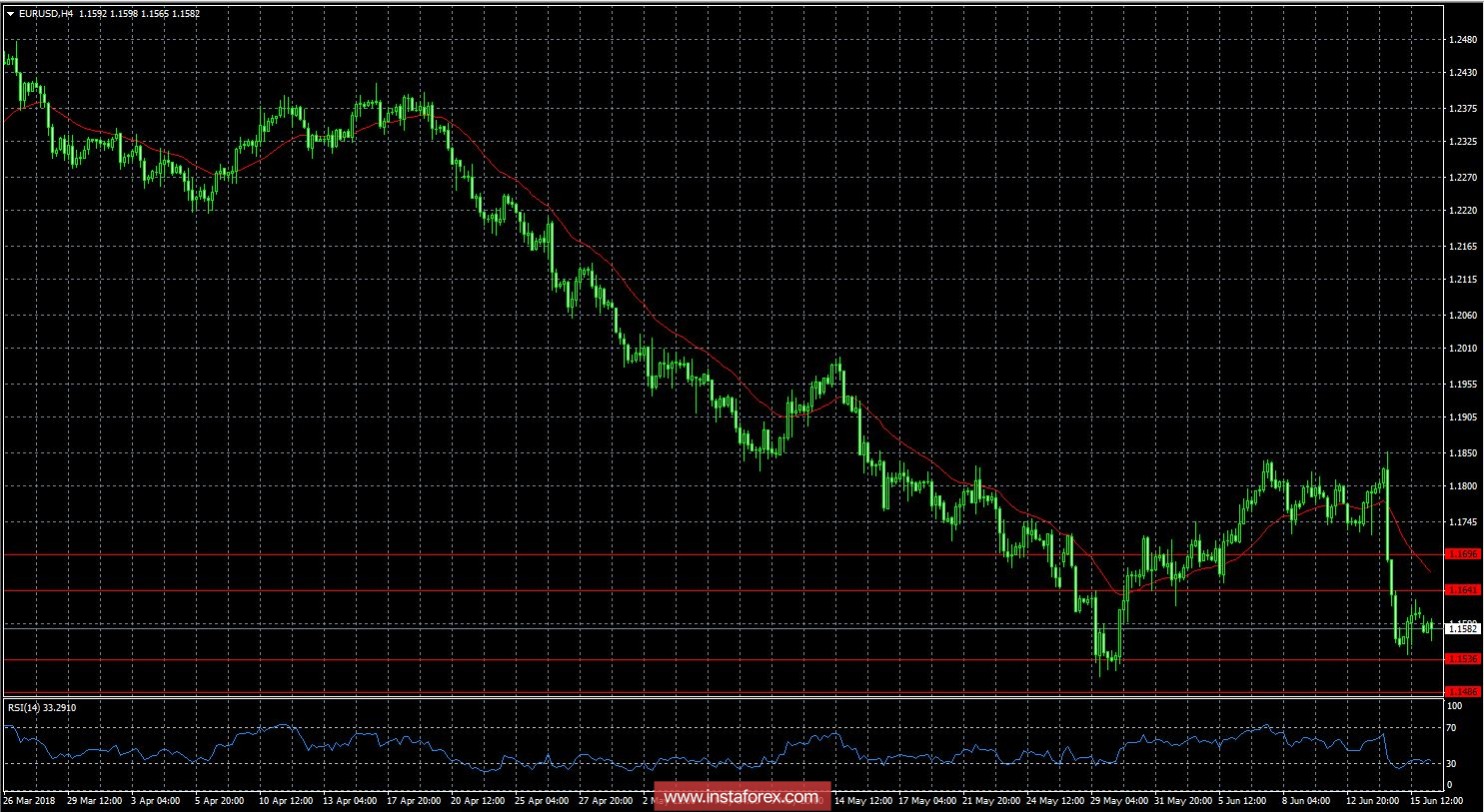Mario Draghi is simply magnificent and incomparable, especially when he paints the single European currency so diligently. The rapid collapse of the euro is precisely his merit. Even before the meeting of the ECB's Monetary Policy Board, the possibility of extending the quantitative easing program was actively exaggerated, which was the reason for the almost two-month decline in the single European currency. But almost before the session itself, the mood changed dramatically, and the ECB was already waiting for confirmation that in September, the quantitative easing program would be phased out, and the terms for raising the refinancing rate would also be named. These sentiments were based on preliminary data on inflation, which showed that it accelerated from 1.2% to 1.9%. Looking ahead, it is worthwhile to say that the final data confirmed the growth of inflation. And of course, no one could believe that with such a significant increase in inflation, the ECB can extend the program of quantitative easing. This option was not even taken into account. But the ECB either did not want to rely on preliminary data, as the final data on inflation came only the day after the meeting of the ECB's board on monetary policy or fears that the growth of inflation, as before, is temporary. The results of the meeting of the ECB's board on monetary policy produced the effect of a bomb that exploded, as the regulator actually extended the program of quantitative easing. Until September, the program will continue to operate at a volume of 30 billion euros per month, and from October to December, it will be reduced to 15 billion euros per month. Earlier, it was planned that the program of quantitative easing will be in effect until September of this year. But now, it operates until December, and do not forget that this is not the first extension of the quantitative easing program. So, no one will give guarantees that the ECB will not extend the program of quantitative easing after December, because the ECB is going to such steps even in the conditions of rising inflation.
Unlike the meeting of the ECB's Monetary Policy Board, the meeting of the Federal Commission for Open Market Operations was a matter of routine, and even boring. The results of the meeting fully coincided with the expectations of market participants. The Fed raised the refinancing rate from 1.75% to 2.00%, confirmed plans to raise the refinancing rate once more this year, and also assured that next year it will continue to tighten monetary policy gradually. All this has long been taken into account by the market and is embedded in the value of the dollar.
However, if we leave aside the statements of Mario Draghi and the results of the ECB's meetings on the monetary policy and the Federal Commission for open market operations, it will be seen that there were simply no special reasons for the joy of a single European currency. Yes, inflation accelerated from 1.2% to 1.9%, but the growth rate of industrial production slowed from 3.0% to 1.7%. No other data on Europe simply did not come out. The US statistics were not so multidirectional and had a much more positive character. Inflation accelerated from 2.5% to 2.8% with a forecast of 2.7%, and producer price growth rates rose from 2.6% to 3.1%, although they were expected to increase to 2.8%. Against the background of such a rise in prices, the acceleration in the growth rate of retail sales from 4.8% to 5.9% looks just great, so there are plenty of reasons for investors to be optimistic. The number of applications for unemployment benefits decreased by 53 thousand. However, there was a bad news, as the growth rate of industrial production slowed from 3.6% to 3.5%, but these data were perceived as positive, up to 2.7%. Thus, without the help of Mario Draghi, the dollar had plenty of reasons for growth. The decision of the ECB only strengthened this effect.
After such a busy week, a little respite is needed, and this week will provide such an opportunity since virtually no macroeconomic data leaves. At least - they will not be so significant. In Europe, the growth rate of the construction industry is projected to accelerate from 0.8% to 2.0%. But these data will be leveled by preliminary data on business activity indices, which should show a decline in the production index from 55.5 to 55.1, and the index in the services sector from 53.8 to 53.7. It turns out that the single European currency will depend on US statistics. In the US, it is expected that the number of construction permits issued will decrease from 1,352,000 to 1,350,000, but the market will ignore this data, as the number of construction projects is to increase from 1,287 thousand to 1,317 thousand. Moreover, the secondary market should increase from 5.46 million to 5.52 million. But at the very end of the week, the dollar will inevitably be under severe pressure, as the number of initial applications for unemployment benefits may increase from 218 thousand to 221 thousand, and the number of repeated applications from 1,6970 to 1,729 thousand. The total number of applications for unemployment benefits may increase by 35 thousand. Worst of all, preliminary data on business activity indices can show a very serious reduction. It is expected that the index of business activity in the service sector will decrease from 56.8 to 54.9, and the production index from 56.4 to 56.2. Naturally, such a significant decline in the indices of business activity will not remain without investors' attention.
Taking into account all the forecasts, the probability of a single European currency growing to 1.1700 is quite high.

 English
English 
 Русский
Русский Bahasa Indonesia
Bahasa Indonesia Bahasa Malay
Bahasa Malay ไทย
ไทย Español
Español Deutsch
Deutsch Български
Български Français
Français Tiếng Việt
Tiếng Việt 中文
中文 বাংলা
বাংলা हिन्दी
हिन्दी Čeština
Čeština Українська
Українська Română
Română

